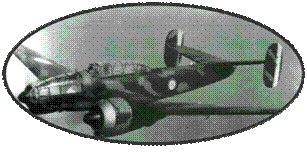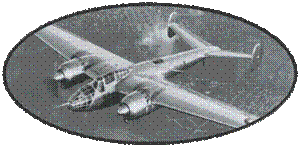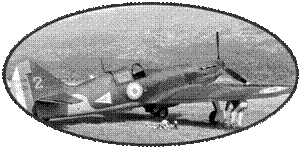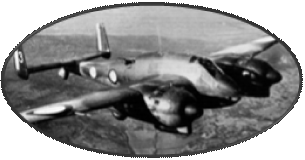The Junkers 52 was originally,
in 1930, a single engine used by Lufthansa as a cargo plane. The
Junkers 52 / 3m designed by Ernst Zindel, was a tri-engine version
so successful that it supplanted the single-engine JU52 on the production
lines.
The Luftwaffe soon became
interested in this aircraft, and clandestinely transformed it into
a heavy transition bomber, the Dornier DO11 to replace it quickly.
The militarized JU52 took the designation of JU52 / 3m ge3 and was
equipped with BMW 132A-1 engines of 660 horsepower. The DO11 finally
not having the required qualities, the JU52 entered officially as
JU52 / 3m g3e motorized this time by 3 engines BMW 132A-3 of 725
horses. This version is equipped with bomb throwers and radio equipment.
He could carry 1500 kg of bombs. His defensive armament only consisted
of a machine gun 7.92mm dorsal and another ventral retractable tank.
Like many German aircraft
at the time, the JU52 / 3m knew the baptism of fire in Spain in
1936. It ensured the transport of Franco's troops between Morocco
and Spain and carried out bombing missions. The commissioning of
more modern bombers brought him back to his original role: transportation.
A JU52 / 3m version g4e came into service with minor modifications:
the tail pad was replaced by a roulette wheel.
Back in Germany, he became
a transport plane and will be used as paratroopers or glider tugboats
during battles in Norway, Holland or Belgium. A version Ju 52 /
m g5e motorized by 3 engines BMW 132T-2 830 hp is put into service
with several improvements, including the possibility of being equipped
with floats or skis or wheel. During the Western Campaign in 1940,
the losses are heavy.
The JU52 / 3m "Mausi"
or MS also took on a very different mission: the dredging of mines.
The device is then easily recognizable: it receives indeed a large
ring under the fuselage and the wings which, crossed by a current
provided by an auxiliary engine, exploded the magnetic mines.
From Ju 52 / 3m g5e, the
ventral machine gun in vats disappeared in favor of two lateral
machine guns of 7.92mm. This weapon was completed later on the version
Ju 52 / 3m g7e by another machine gun, always of caliber 7.92mm
in dorsal position at the front of the fuselage.
On the Ju 52 / 3m g8e, the
loading door on the right side was widened, and it received a machine
gun of 13mm in position dorsal in place of the machine gun of 7.92
back.
The JU52 / 3m g9e, which
appeared in 1942, had a towing hook and a reinforced landing gear
for overload take-offs.
And finally, in 1943, appears
the ultimate version, the Ju 52 / 3m g14e, equipped with protective
armor for the crew and an improved defensive armament.
Production of the JU52 /
3M stopped in mid-1944 with a total of 3,225 aircraft produced.
This apparatus was used by the Germans on all fronts and rendered
innumerable services. Nicknamed "Aunt JU", he continued
his career after the war in Spain and France. These two countries
have resumed manufacturing under the respective names of "CASA
352" and "AAC-1 TOUCAN".













